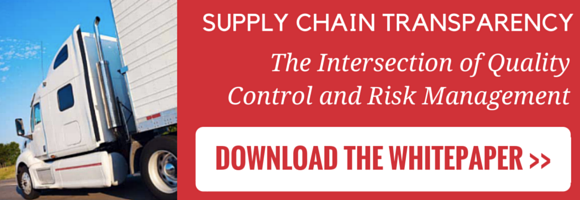
In the food industry, competitors with the same product or similar product lines have a number of comparison points to rest on — taste, quality, distribution and so on. Ultimately, however, cost savings at the manufacture point offer a tempting "leg up" that can free up budget to invest beyond the food supply chain. With this in mind, opting for a low-bid supplier or service provider seems to be the best way to increase margin — but is it really? The cheapest vendor can actually end up being a lot more expensive than their closest rival, even if it doesn't seem that way at a glance.
The Hidden Cost of Transportation
Service providers, specifically transport companies, are often considered simply necessary. They may not be subjected to the same scrutiny as a physical ingredient or finished good provider would be within the supply chain, but that doesn't mean they're always a bargain. Even if an attractive rate is quoted and agreed to, hidden charges like the "peg rate" (an agreement which guarantees a certain cost-per-fuel-gallon rate, even if the national rate falls below that amount) can drive the cost up considerably. When selecting or changing a transportation or distribution provider, always make sure you carefully examine your contract to determine the potential worst case scenario cost, rather than assuming you'll pay a rate that never fluctuates or multiplies in challenging conditions. Additionally, make sure you're well-informed as to who pays for a load that is damaged or spoiled due to poor containment or faulty refrigeration. When money's on the line, it's far better to hold a provider to task than to chase down your company's insurance policy for a payout, if the problem is even ruled to be covered.
The Hidden Cost of (a Lack of) Collaboration
Transparency in the food supply chain is largely dependent on technology these days, incorporating everything from real time transportation and storage data to projected delivery dates based on facility output. If you choose a cheaper vendor, that cost savings may come at the cost of a slow-to-develop tech presence that can't be integrated with higher tech in your own facilities. If your supplier can't receive or communicate data as quickly and accurately as your company, your transport partners and other supply chain nodes are able to, the result is an efficiency mismatch that could prove to be a serious setback for your entire supply chain. Beyond technology, if your supplier doesn't use modern fulfillment methods, such as cross-docking, you may be "paying" in time what you aren't paying upfront in cost. Adam Robinson of Cerasis notes that avoiding this scenario is how large companies like Walmart remain so successful.
The Hidden Cost of Quality Control
Driven by conscious consumers and supported by a marketplace eager to glean bullet point-worthy benefits, quality is the word on everyone's lips in the food industry today. Inevitably, corner-cutting suppliers end up getting their down-chain partners in hot water as they're forced to deal with recalls and ingredient scandals to preserve their brand image. Suppliers can typically be quickly eliminated from a chain if they're found to be using questionable practices, but by then the damage is already done in the mind of the consumer. Bear in mind, when considering quotes and bids, that there must be some reason that supplier A can offer a lower price than supplier B, especially if all other attributes of their production appear to be more or less the same. If you don't ask why, and independently determine the accuracy of that answer, you could be exposing your company to a great deal of liability — both metaphorically and financially.
Consider this: If you select a supplier that is both lax on quality control and collaborative tech capability, you could find yourself in a nightmare scenario, facing a recall without reliable framework to ensure you've "caught it all," cautions Frank Castiglia on LinkedIn.
Part of your pricing strategy will always be keeping costs down, but that should never happen at the expense of a well-maintained, tech-savvy and transparent food supply chain. Your company — and your customers — depend on you making the right supplier choices, and those criteria can't be based on cost alone.






